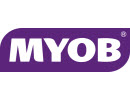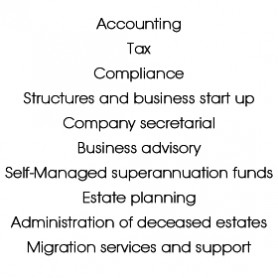Generally, when an individual makes a concessional contribution into super, they are either entitled to a tax deduction (ie personal deductible contribution) or the pre-tax income is not taxed to them personally (eg salary sacrifice), but instead taxed in the superannuation fund at a concessional rate. The concessional contributions cap essentially limits the amount of pre-tax contributions an individual can make into super.
Where an individual has exceeded their concessional contributions cap, the excess amount is included in their assessable income and taxed at their marginal tax rates (MTR).
The individual is also entitled to a 15% non-refundable tax offset to compensate for the tax paid by the superannuation fund on the same excess contribution.
Due to timing differences of when tax liabilities become payable, there could be some
advantage for people who breach their concessional contributions cap, as the tax liability on excess contributions is paid later than if the member had not made an excess contribution and instead paid PAYG tax on their income. To neutralise these benefits, an ‘excess concessional contributions charge’ is imposed on individuals who have excess concessional contributions in a particular financial year. See ‘Excess concessional contributions charge’ below for further details.
Members can elect to have up to 85% of their excess concessional contributions released from super.
Example:
Frank (subject to a MTR of 34.5%) makes excess concessional contributions of $20,000. Firstly, these contributions will be assessable income of his super fund and be taxed at up to 15% ($3,000). Secondly, $20,000 will be added to Frank’s assessable income for the financial year ($6,900) but he will receive a 15% tax offset ($3,000). Frank’s excess concessional contributions have effectively been subject to a maximum of 34.5% (his MTR). This excludes any excess concessional contributions interest charge that may be payable.
Excess concessional contributions charge
Under the new rules, an ‘excess concessional contributions’ charge applies. This charge (essentially an interest charge) recognises the fact that a client making excess concessional contributions can avoid these amounts being taken into account under the PAYG rules and therefore pay tax later than would otherwise be the case.
The charge:
- is payable with reference to the amount of a client’s income tax liability for the financial year that is attributable to excess concessional contributions.
- is calculated from the start of the financial year in which the excess contributions are made until the day payment is due under the client’s first notice of assessment for that financial year
- is calculated and compounded daily at a rate equal to the RBA-published 90 day bank accepted bill rate plus 3%
- becomes payable when the client is liable to pay income tax attributable to the excess concessional contributions.
Example:
Joanne exceeded her concessional contribution cap by $10,000 in the 2019-20 financial year. She is on marginal tax rate of 37% plus 2% Medicare levy.
The excess concessional contribution charge is applied on the following tax liability: tax assessed on excess CC: $3,900 ($10,000 x 39%) less tax offset on excess: $1,500 ($10,000 x 15%).The ECC charge is applied on the amount of tax liability of $2,400. If the applicable Shortfall Interest Charge rate is 4.54%, this is equal to 0.01243836% per day.
The ECC charge would be (1.0001243836n – 1) x $2,400, where n is the number of days. For a period of 30 days, for example, the ECC charge on $2,400 would be approximately $8.97. The ECC charge is calculated by the ATO and is paid from the start of the financial year until first income tax assessment is due. The shortfall interest charge is then payable from that date until the date the extra income tax liability (as result of the excess concessional contribution) is due.
Shortfall interest charge
When there has been as excess concessional contribution, the member’s tax return may be amended to include the excess contribution (and applicable 15% tax offset). As a result, the tax liability may be increased. The ATO applies interest to this shortfall amount for the period between when it would originally have been due and when the assessment is corrected.
Taxpayers are usually unaware of a shortfall amount until they receive an amended assessment, so the ATO applies a lower-rate interest called shortfall interest charge (SIC). The SIC is then payable from the date of the first income tax assessment until the date the extra income tax liability (as a result of the excess concessional contribution) is due.
General interest charge
If an amount of ECC charge and shortfall interest charge remains unpaid after the time it is due, the individual will also be liable to pay the general interest charge (GIC) on the unpaid amount for each day in the period from when the amount was due until it is paid. Refer to the ATO website for current GIC rates. As a guide, the annual GIC rate for the July to September quarter of the 2019-20 financial year is 8.54%.
Administration of excess concessional contributions
The ATO will issue an individual who has exceeded their concessional contributions cap with an excess concessional contributions determination. Together with the determination, the ATO will issue an income tax return Notice of assessment/Notice of amended assessment to advise the individual that their excess amount has been included as assessable income in their tax return.
Individuals should check that the information on the determination is correct. The ATO makes assessments and determinations based on information provided by superannuation funds and the individual’s tax return. There is a possibility that the individual’s super fund has incorrectly reported the contribution. If there has been a mistake, the super fund can re-report the contribution to the ATO. A fund can’t re-report contributions simply to assist its member to avoid exceeding one or more contributions caps.
If there’s no error in the ATO’s excess concessional contributions determination, the individual should pay the tax liability as stated in the determination using their own money. However, they have the option to elect to release up to 85% of the excess amount from their superannuation fund to pay the tax. It is important to note that excess concessional contributions (excluding the grossed up amount of those that are released) count toward an individual’s non-concessional contributions cap.
Electing to release excess concessional contributions
Individuals may elect to have up to 85% of any excess concessional contributions made from 1 July 2013 released from their super fund. This may be necessary, for example, to allow the individual to have enough funds available to pay income tax on their excess concessional contributions.
An individual must make such an election to the ATO through their MyGov account within 60 days from when an excess concessional contributions determination or an amended determination is issued. The request must specify a valid release amount (up to 85% of the excess concessional contributions amount) and identify the superannuation interests from which it is to be released. Once made, an individual is not able to revoke an election to release excess concessional contributions.
Once an individual has made an election, the ATO will issue a release authority to the member’s super fund. The superannuation provider has 10 business days from the date of issue of the release authority to release this amount to the ATO, unless a further period had been allowed by the ATO.
Excess concessional contributions released to the ATO are applied as a credit against the individual’s tax liabilities. To the extent the released amount exceeds the individual’s liabilities, it is refunded to the individual. The individual may be entitled to the payment of interest if there is an unreasonable delay between the ATO receiving the released amount and the payment of any refund to the individual.









